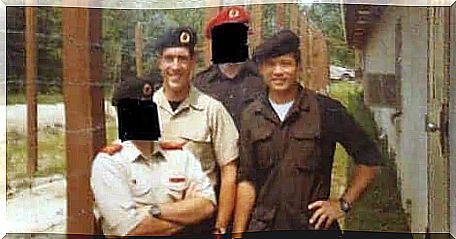Using Psychology Against Terrorism: Guantanamo

When psychologist James E. Mitchells testified in a military court about Guantanamo, many were worried. There had been talk of using psychology against terrorism, and Mitchell not only acknowledged that he had used his knowledge to torture prisoners, but also said he would do it again if given the chance.
Let us look back and remember how popular the fight against terrorism became after the attacks of September 11, 2001. The attacks led to a declaration of war against Muslim terrorists around the world, and after a series of brutal terrorist acts, the war had widespread support among the common man.
This situation developed, among other things, before the US invasion of Afghanistan. Members of terrorist organizations such as al-Qaeda were arrested and sent to the Guantanamo Bay Navy Base. First through Wikileaks, and later through several other media, the public found out about the torture that the prisoners were subjected to in Guantanamo. The torture was carried out by licensed psychologists.

Two psychologists in Guantanamo
It all started with the infamous The Manchester Manual . This was a guide for al-Qaeda’s followers with specific instructions regarding them instructive topics, such as how to successfully lie during an interrogation. Psychologists James E. Mitchell and Bruce Jessen analyzed this document and sent it to the US authorities.
All indications are that they did this for marketing purposes over their own ability to handle al-Qaida’s interrogation methods. Subsequently, the two psychologists were employed as instructors in the program Survival, Evasion, Resistance and Escape ( survival techniques, covert escape, resistance, rescue ), also known as SERE, under the US Air Force.
They had previously taught American soldiers to resist torture if they were to be taken prisoner during an armed conflict. However, their duties were changed after analyzing The Manchester Manual . Subsequently, they began using psychology as a method against terrorism during ongoing interrogations.

The use of psychology against terrorism
Mitchell and Jessen are the legitimate psychologists behind the “modern” torture in Guantanamo Bay. If you take a closer look at the methods they used, you will notice that they are anything but new. In this case, however, the information they obtained was angled to support the supervisors’ psychological theory.
According to them, they used the theory of learned helplessness. This theory, presented in 1967 by psychologist Martin Seligman, refers to a continuous punishment that causes a person to learn to be submissive to an attacker. In short, the learned behavior that they are not equal to the one who tortures them.
Mitchell and Jessen made their interpretation of this theory and created, what they called, improved interrogation techniques. These techniques consisted of systematic physical abuse, keeping the prisoner isolated and not letting them sleep or eat. All with the aim of breaking their will. None of this is new, but rather sadistic. But normally you lighten the whip with a carrot every now and then. The interplay between punishment and reward is what has traditionally been shown to be effective.

Arrogance leads to disappointment
These two psychologists did not speak the language of the prisoners, but they were personally involved in the torture. They performed procedures such as drowning and sporadic blows to the head for hours on end. Perhaps the most horrible thing is that they did not get the information they wanted. Many prisoners resisted and did not speak, and those who did were free to lie without the reprisals being worse than normal.
During an ongoing Guantanamo trial, in which five prisoners act as plaintiffs, Mitchell has been called to testify but has not been charged with anything. He, along with his colleague Jessen, earned more than $81 million for his work. They both have a clause in their contracts that gives them $5 million each in possible legal penalties. However, these trials will not take place as the situation with Guantanamo has not led to any convictions.
It is dangerous as the world’s greatest powers stimulate and encourage this type of experimental interrogation technique. However, there is an even more problematic aspect to the Guantánamo case; to use psychology to inflict harm and torture.









